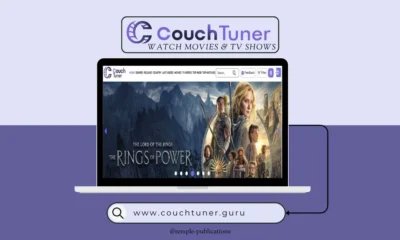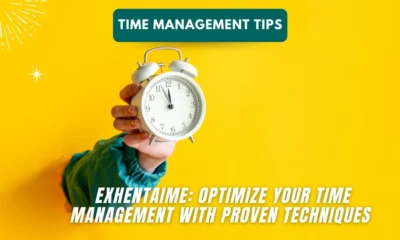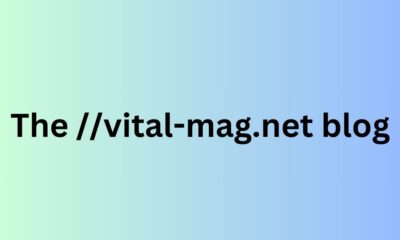BUSINESS
LessInvest: Master Your Money, Secure Your Future

The financial education platform LessInvest teaches individuals to achieve financial security by investing and spending wisely. Knowledge about money management serves as the foundation for financial independence, as poor financial choices lead to long-term financial problems. Individuals who learn to budget their money, alongside saving and investing with risk management, build wealth that secures their future success. Through LessInvest, users gain expert financial knowledge and resourceful guidance that helps them choose their investments wisely and avoid common money mistakes while seizing wealth development opportunities. The guide presents vital financial information that follows the LessInvest approach to provide users with essential capabilities throughout their financial journey.
The Importance of Financial Education
People need financial literacy training to navigate the modern economic landscape successfully. Many individuals encounter three major financial pitfalls, which include spending beyond their means, neglecting budgeting, and delaying the start of their investments. Financial literacy empowers people to make sound decisions that prevent high-interest debt while allowing them to capitalize on investment potential. LessInvest offers educational resources that assist users in acquiring financial expertise to effectively build their wealth. Self-education regarding money management enables people to enhance their financial confidence while adopting improved spending practices and striving for complete economic independence. Gaining proper financial knowledge allows individuals to transform their temporary financial issues into a lasting foundation of wealth and stability.
Smart Spending: The Foundation of Wealth
The key to wise spending requires individuals to distinguish between necessary and unnecessary items. Those who make impulsive purchases hinder their ability to accumulate wealth. Employing mindful spending techniques enables individuals to allocate their funds effectively for essential items and avoid wasteful expenditures. The combination of price comparison and couponing, along with valuing long-term benefits over immediate gratification, yields significant financial advantages. The practice of delaying instant rewards fosters better financial control and leads to increased savings. LessInvest explains that intelligent spending involves making deliberate decisions for larger future investments, which promotes sustainable financial growth over time.
Budgeting for Financial Freedom
Financial independence requires a budget that is properly organized. Budget management becomes efficient through three effective approaches: zero-based budgeting, the 50/30/20 rule, and the envelope system. Financial stability, along with reduced stress, emerges when funds are properly allocated between necessities and savings or investments. Budgeting applications and tracking tools make expense management easier for those who need to maintain their financial plans. LessInvest teaches its users to manage their finances with discipline by directing their income toward meaningful purposes rather than spending it on unnecessary items. When people establish strong budgets, they develop their wealth while reducing financial stress and ensuring security.
Debt Management: Breaking Free from Financial Burdens
Financial security becomes challenging when one has debt; however, understanding the difference between beneficial debt, such as mortgages, and harmful debt, such as high-interest credit cards, is essential for achieving it. The snowball and avalanche debt repayment strategies enable people to eliminate their debt effectively. The practice of avoiding unnecessary loans, combined with steering clear of high-interest debt, helps individuals avoid financial problems. LessInvest provides users with debt management solutions that teach them to borrow responsibly while making timely payments. Individuals who eliminate bad debt gain access to additional income that they can invest in wealth-building activities. Appropriate debt management practices decrease financial anxiety and establish a foundation for enduring financial success.
Saving Strategies: Laying the Foundation for Wealth
Financial security requires that people save money, as emergency funds and long-term goals necessitate savings. A well-established emergency fund ensures that individuals can avoid relying on credit during financial crises. High-yield savings accounts offer superior returns compared to traditional accounts, making them ideal tools for accumulating savings. Savings automation creates a reliable system that protects money from unnecessary expenditures. LessInvest teaches that saving involves more than just setting money aside, as it also means growing funds through strategic investments for future needs. The combination of frequent savings with high-yield investment strategies creates financial security while enabling people to manage unexpected expenses or seize investment opportunities.

Stock Market Investing: A Beginner’s Guide
Long-term wealth accumulation occurs through the stock market, yet mastering its operations remains essential. The diversification of investment portfolios is possible through investments in stocks, index funds, or exchange-traded funds. The financial objectives of investors determine which investing approach they should adopt, from value investing to dividend investing. Financial losses happen when investors make two frequent errors: trading based on emotions and failing to conduct proper research. Through LessInvest, users gain access to dependable stock market investment strategies as well as market insights. With sound investment knowledge, people can create profitable portfolios that generate consistent earnings to support their financial stability.
Real Estate Investing: A Method for Building Wealth
Investing in real estate serves as a method to develop long-term financial assets. Real estate investments allow people to build lasting wealth because properties generate rental payments and their market values grow over time. Real estate investment strategies include owning properties through rentals, investing in REITs, and flipping houses. Success in real estate investing depends on studying target properties while analyzing locations and developing financial plans. LessInvest provides users with training on starting real estate investments with limited funds and demonstrates how real estate can foster financial growth. Carefully considered property investments enable people to establish passive revenue streams while combating inflation. A well-planned approach to buying properties, along with strategic investments, leads to an enduring real estate collection that maintains continuous earnings and promotes long-term financial stability.
Cryptocurrency and Digital Assets: A New Age of Investing
The investment class of cryptocurrency presents both emerging opportunities and substantial risks in its fast-changing market. The decentralized financial solutions operated by blockchain technology enable currencies such as Bitcoin and Ethereum, alongside other cryptocurrencies. Investors need to recognize that markets exhibit unpredictable changes and that new laws will affect their investments. LessInvest offers guidance on secure investment strategies by teaching members how to protect themselves from financial scams. Digital assets, including NFTs, provide investors with new investment alternatives. Crypto investments can yield high returns, yet investors need both smart decision-making and effective risk management strategies. Those who allocate funds to digital assets should integrate them with established strategies to create a well-rounded and secure financial investment foundation.
Actionable Steps to Take Right Now
The first step requires you to examine how you spend your money. You should identify costs that are not essential, then move the saved money into savings and investment goals. Develop an uncomplicated budgeting system that focuses first on essential costs, debt elimination, and wealth accumulation goals. A high-yield savings account should be opened along with investments in stocks or real estate properties. Study how to invest intelligently and explore different passive income strategies. You should implement tax-saving methods to prevent excessive deductions from your income. You need to perform minor yet steady financial actions to achieve success. The LessInvest method teaches you to cut expenses for greater investment possibilities, which results in better financial prospects when applied each day.
Conclusion
To become financially well-off, you must make purposeful decisions that lead to financial gains. The LessInvest platform advocates that reduced expenses create better opportunities for investment. Any person who follows strategic budgeting combined with smart saving and investment practices will build a brighter future. Financial freedom requires efficient money management above all else, rather than a greater income. Small, disciplined steps taken today lead to long-term wealth and security. The power of knowledge grows through constant learning, which leads to success. Take charge of your financial situation today so that each dollar contributes to your goal achievement. Financial independence begins with the application of LessInvest’s smart money principles.
-

 BIOGRAPHY6 months ago
BIOGRAPHY6 months agoBehind the Scenes with Sandra Orlow: An Exclusive Interview
-

 HOME12 months ago
HOME12 months agoDiscovering Insights: A Deep Dive into the //vital-mag.net blog
-

 HOME1 year ago
HOME1 year agoSifangds in Action: Real-Life Applications and Success Stories
-

 BIOGRAPHY1 year ago
BIOGRAPHY1 year agoThe Woman Behind the Comedian: Meet Andrew Santino Wife




























